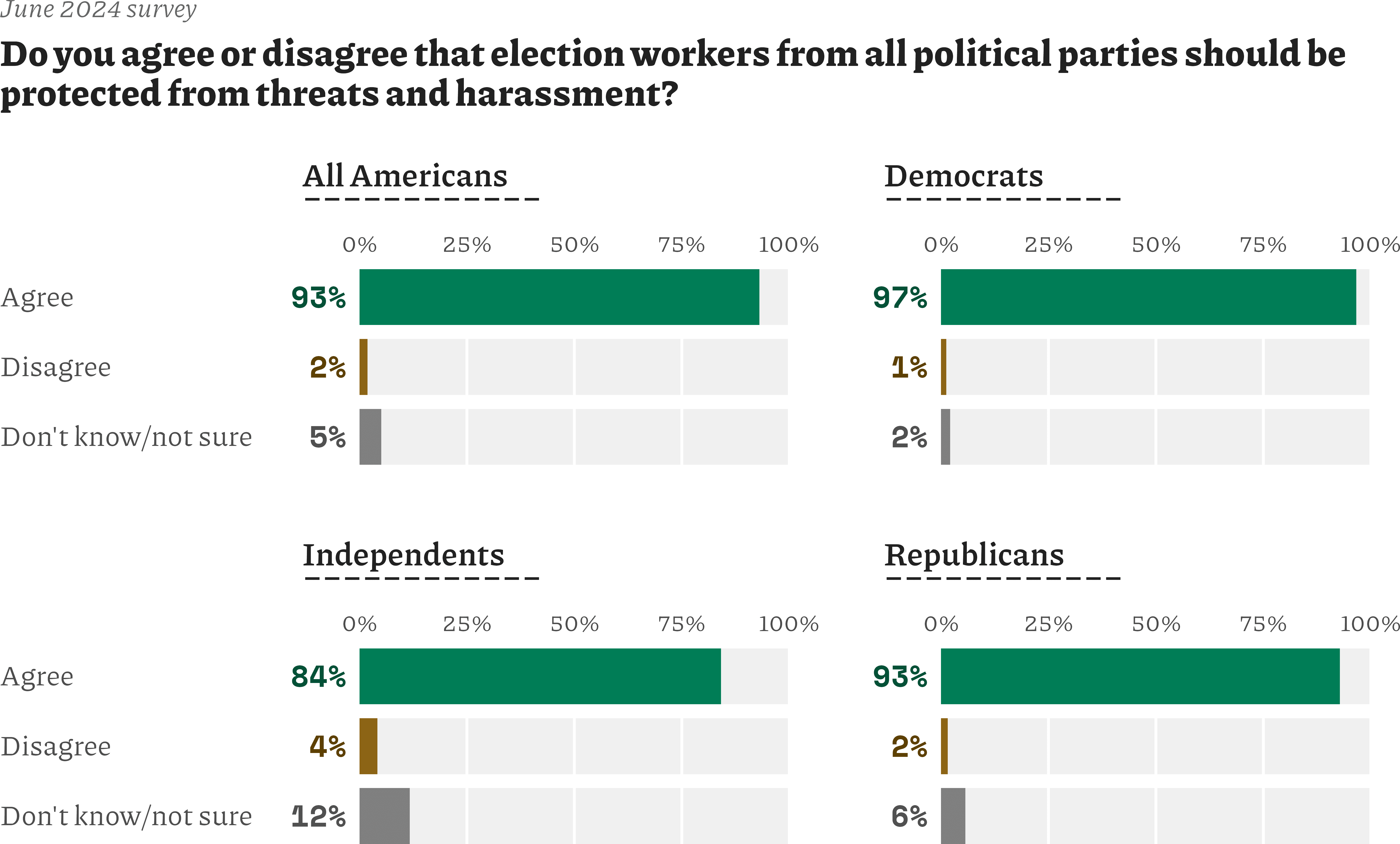New Survey: Americans Overwhelmingly Support Protections for Election Workers
In This Resource
It’s a landslide: Almost all Americans want election workers protected.
A new survey from States United finds enormous public support for making sure election workers are safe from threats and harassment. Overwhelming majorities of Republicans, Democrats, and independents said election workers should be protected.
Overall, 93% of respondents agreed that election workers from all political parties should be protected from threats and harassment. And 5% said they didn’t know or weren’t sure, leaving only a sliver of Americans who disagreed.

Elections in the United States depend on a vast workforce. It includes tens of thousands of state and local election officials and their staffs, who plan elections, oversee voting and tabulation, and certify results. It also includes hundreds of thousands of poll workers.
In recent years, though, election workers have been subjected to widespread harassment and worse. In a survey released in May by the Brennan Center for Justice, 38% of local election officials reported experiencing threats, harassment, or abuse.
Across the political spectrum, Americans want that to stop. Support for election worker protection included 97% of Democrats, 93% of Republicans, and 84% of independents.
This survey is based on 1,517 interviews conducted on the internet of U.S. adults. Participants were drawn from YouGov’s online panel and were interviewed between June 4th and 11th, 2024. Respondents were selected to be representative of American adults. Responses were additionally weighted to match population characteristics with respect to gender, age, race/ethnicity, education of registered voters, and U.S. Census region based on voter registration lists, the U.S. Census American Community Survey, and the U.S. Census Current Population Survey, as well as 2020 presidential vote. The margin of error for this survey is approximately ± 2.8 percentage points, though it is larger for the analysis of partisan subgroups described above. This figure does not reflect non-sampling errors, including potential selection bias in panel participation or measurement error.
Note: In keeping with best research practices, we classify independent voters who reported “leaning” toward either the Democratic or Republican parties as partisans. Therefore, we define “independents” as those respondents who professed no partisan attachments whatsoever.